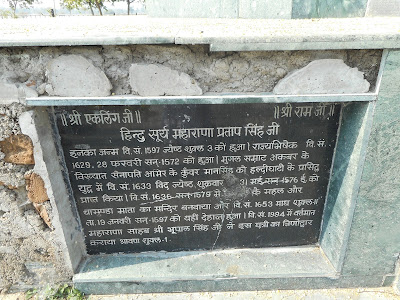The road from Udaipur quickly fades into quiet countryside as you head toward Jaisamand Lake and Chavand, a journey few package tours will offer, but one forever imprinted on my memory. Just shy of an hour and 59km from the city bustle, you reach Jaisamand (Dhebar Lake), the “Ocean of Victory,” sprawling as Asia’s once-largest man-made lake. Built in 1685 by Maharana Jai Singh, who followed his father’s legendary tradition of dam-building, this vast sheet of water shimmers in the sunlight. I watched local ferries pass and marble stairs dip into blue shallows, imagining bygone queens slipping into cooling water beneath the massive embankment. Even today, friendly boatmen linger, eager to usher you onto the lake for a breezy ride. They tell you stories of how once a Maharana roamed these dense forests in search of freedom. Do pause here and soak in the peaceful air before venturing further southwest, toward the forgotten echoes of Mewar’s pride. The drive to Chavand, just beyond Jaisamand near the Gujarat border, narrows into forest and fields, passing village scenes that seem untouched by time. It was here that Maharana Pratap, Mewar’s greatest hero, found solace and strategy after the fateful Haldighati battle. The hills and dense greenery offered clever camouflage, and it’s easy to see why Pratap, forever a rebel, chose this wild margin as his capital. Our car eventually stopped at an old signboard, the kind that makes heart and history skip together: it bore the names of Pratap’s family, wife Ranisa Ajabdeh, and even a line showing his kinship with Shivaji; a shiver ran down my spine. Right across the path, a simple gate led to the lake at Chavand. Here stands Pratap’s cenotaph, built by his son Amar Singh on a small peninsula of Khejad Lake, which they locally called Badi Tilla, 2km from the palace of Chawand. The site radiates a solemn peace; a single lamp is always lit at the Samadhi, pigeons fluttering quietly as if nature itself keeps watch. Few travellers make it here, and I was struck by the absence of crowds, just silence and a ripple of wind, as if the land is still mourning an unfinished story. Amar Singh performed his father’s last rites in the winter of 1597, and Ranisa Ajabdeh, too, is said to have passed her last days in these forests, her story quietly woven into the soil. If only there were a memorial for her bravery as well. Walking around, I offered wildflowers at the Samadhi, reflecting on why Pratap seemed to love this rugged land more than Udaipur’s marble palaces. The grandeur of the city never appealed to him. It was here, amid untamed nature and loyal subjects, that he found a sense of home. The feeling is bittersweet: standing where a legend found peace, longing that he could have seen Mewar free once again. A short drive farther up, we stopped at Pratap’s memorial statue. Cast in stone, he seems to gaze fiercely over his ruined but free capital, a reminder of his indomitable will and the years spent rallying his people for Mewar’s honour. In the foothill, stretch the remains of his humble palace: not lavish, but determined, standing resilient among scrub and boulders. Locals warned of snakes in the brush, so I admired the fort from afar; still, you can make out walls, an arched gateway, and traces of the two-storeyed retreat where Pratap spent his last 17 years of his life. Chavand is often described as sad, a place where heroes died. But to me, it brims with spirit. Exploring those sunlit hills, I felt the powerful presence of history, the same wind that once carried Pratap’s hopes through the trees. This is still Mewar: proud, wild, and free. As you leave, let the silence sink in; a living testament to those who loved this land with all their might. Chavand, often unsung and rarely visited, is a place not merely of endings but of enduring courage. I left quietly, heart full, certain that Pratap’s legacy will keep stirring here long after every visitor is gone.
|











.jpg)





